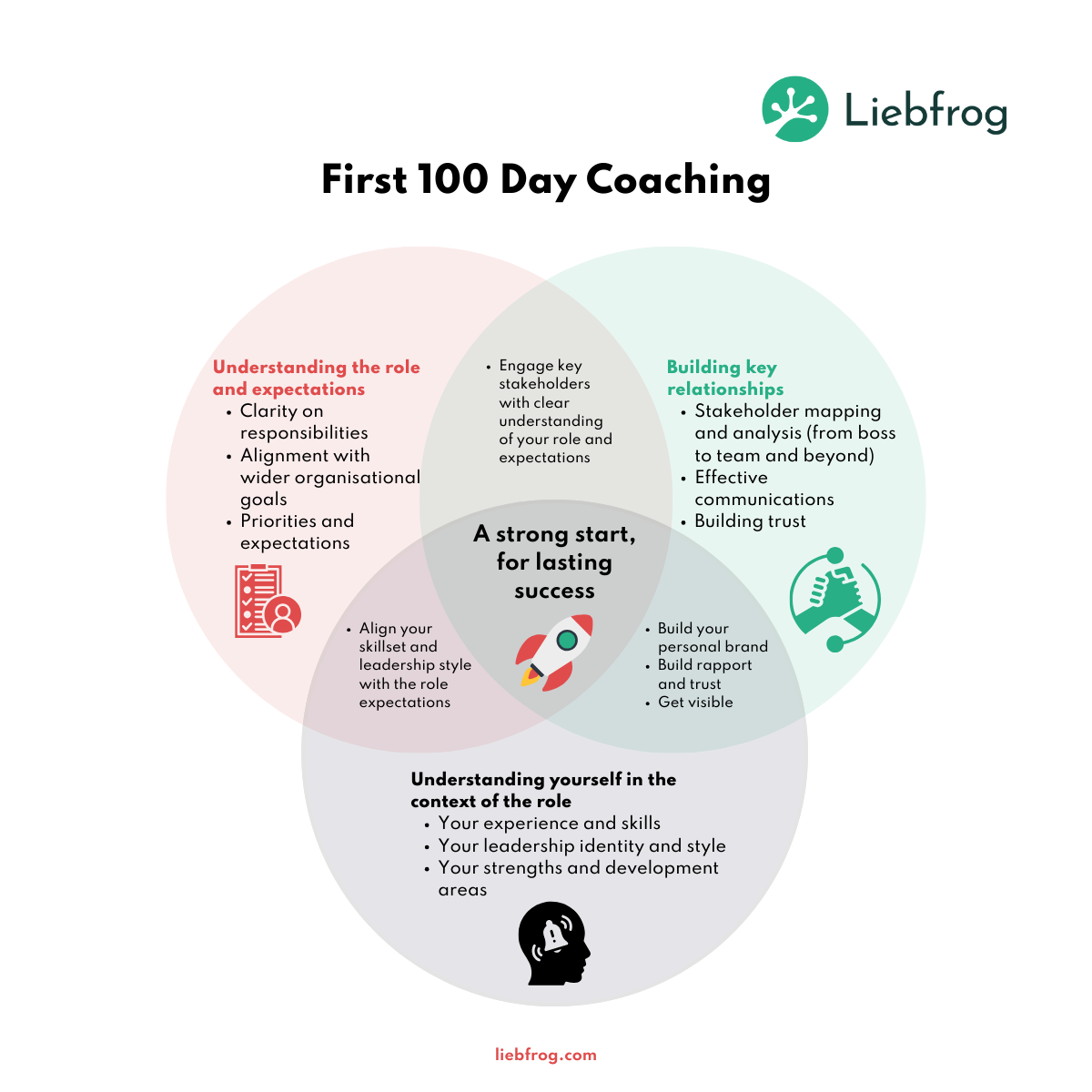Secured the role? Now secure your success! How a 100-Day Plan Sets You Up for Success from Day One.
Summary: The first 100 days in a new role are critical for establishing credibility and setting the foundation for success. Just like political administrations crafting their initial plans, new leaders also benefit from a structured approach to deliver early wins. This article highlights three key strategies: clarifying role expectations, assessing your strengths and development needs, and building essential relationships.
Congratulations!!! 🎉
You got the new role!
Your hard work (and courage) has paid off, and you’ve landed that exciting promotion or new job.
But now, as your start date approaches, your initial excitement is giving way to thoughts (and maybe even worries) of how to ensure you actually succeed.
There’s a good reason why new political administrations devise a 100 day-plan: they know their early actions are under close scrutiny and set the tone for their tenure.
This approach isn’t just for politicians; it’s equally critical for anyone starting a new job. A well-structured 100-day plan is essential to starting off strong and making a positive impression.
The focus of your 100-day plan should be clear: to understand the company’s expectations of you, and then to exceed them.
Sounds easy.
But how to start?
By focusing on the following three areas.
1. Understand the role and expectations
Start with the basics.
Are you completely clear what’s expected of you and how you will be evaluated? After all, you can’t meet, let alone exceed, expectations and KPIs that you don’t fully understand.
Begin by clarifying your exact responsibilities and understand how they contribute to your company’s broader goals. Gain clarity about what you won’t do, as well as what you will - particularly if transitioning into a newly created role where you have the opportunity to shape the position.
Be a zero – but not for long
Transitioning into a new role can feel as alien as preparing for a space mission. In his book ‘An Astronaut's Guide to Life on Earth’ NASA astronaut and former ISS commander Chris Hadfield says you’ll inevitably be evaluated in one of three ways:
as a minus one (creating problems),
as a zero (neutral), or
as a plus one (adding value).
Hadfield’s advice: Be a zero. Because if you gush in, you’re sure to be seen as a minus one.
But watch out! In corporate settings, you can’t remain unnoticed for long. Unlike NASA astronauts, who share intense qualifying experiences, you need to swiftly establish your credibility and likability.
So, how do you successfully integrate if you’re not Chris Hadfield?
👇
2. Understand yourself in the context of the role
Reflecting on how your strengths and weaknesses align against your new role and where your developmental areas are is key. But success also entails (re)defining and promoting your personal brand.
In your first few weeks and months, you’ll meet many new people. It’s an ideal time to share your personal story. Take a moment to prepare, so you can make the most of these opportunities and leave a great first impression.
Enhancing image and exposure in role transitions
In his famous PIE model, Harvey Coleman pinpointed that an astonishing 90% of professional success hinges on whether others have seen you (E = exposure) and whether they like what they see (I = image, or reputation). And while the P of course stands for performance, Coleman was very clear: performance alone won’t be enough to stand out and succeed.
Your exposure and image are even more important when you transition into a new role as your new colleagues work out who you are, what you stand for, whether they like you, and ultimately trust you.
3. Build key relationships
In a complex organisation no one person succeeds alone - a robust network supports every successful leadership journey.
Do you know who your personal key stakeholders are? Whose opinions matter? Who has informal power?
Beyond your team, peers or seniors there are likely to be other players who greatly influence your chances of success. Make sure you identify those people early on, and work towards understanding their goals and expectations of you. Then start engaging to build trusting relationships with them.
Onboarding conversations are a great opportunity to start building your network. But don’t be naïve and assume everyone will have your best interests at heart. Understanding and navigating hidden agendas and internal dynamics can be as complex as the work itself. According to McKinsey, it is in fact ‘politics, culture, and people’ that leads to 68% of leadership transitions failing.
The role of coaching in successful transitions
While exciting for sure, transitioning into a new role is also often one of life’s more challenging experiences.
Working with an executive coach can help you navigate these challenges. It gives you a confidential space where you can work through the topics and challenges you can't (or don't want to) discuss elsewhere. What’s more, research shows that coaching during this critical period can double your likelihood of success.
Every day counts when establishing yourself. Don’t waste another one before you start planning for your success.
Liebfrog’s First 100-Days Coaching Programme
The cost of an unsuccessful transition are high, both for the individual and the organisation.
Onboarding coaching has been shown to double the chances of a successful transition. Yet fewer than a third of organisations use it.
The First 100-days coaching programme helps transitioning leaders develop and implement a robust 100-day plan, setting them up for a strong start and lasting success.
Whether promoted internally or recruited externally, the programme is available for individuals and organisations.
December 2024
If you’ve enjoyed this article and don’t want to miss future reflections and resources then do sign up for monthly newsletter.






